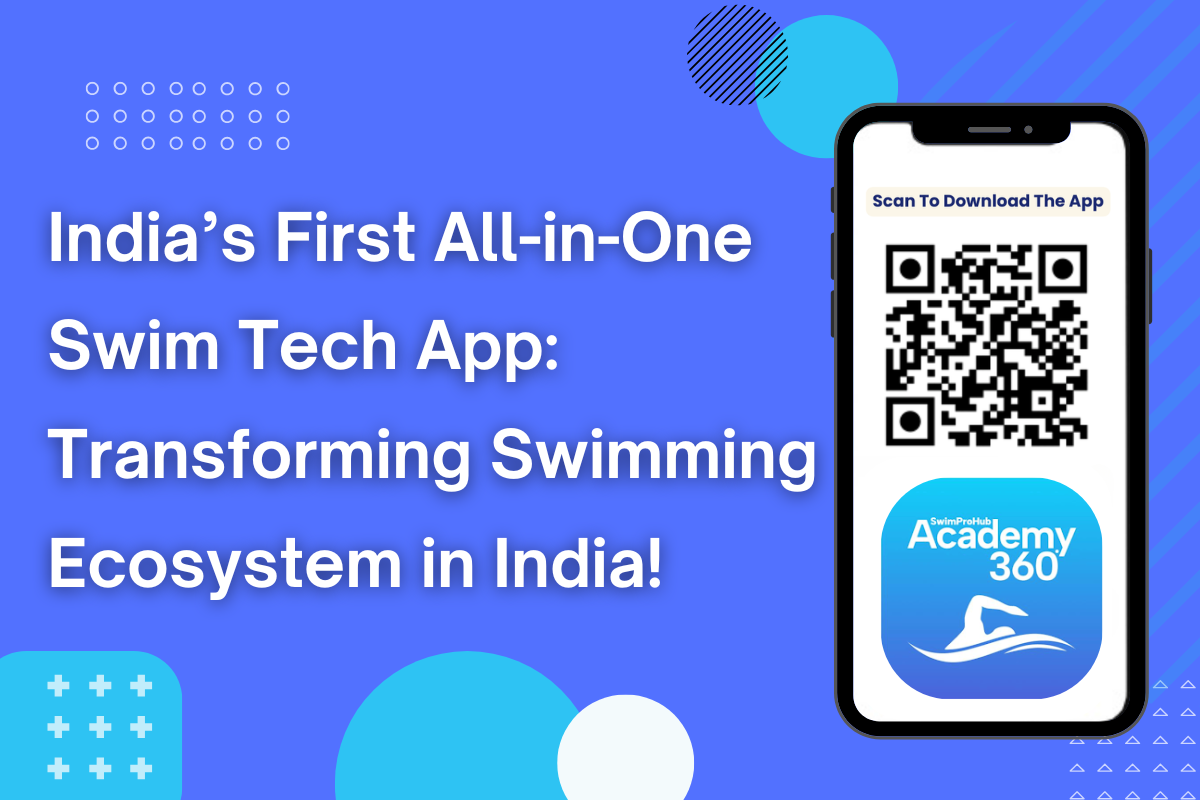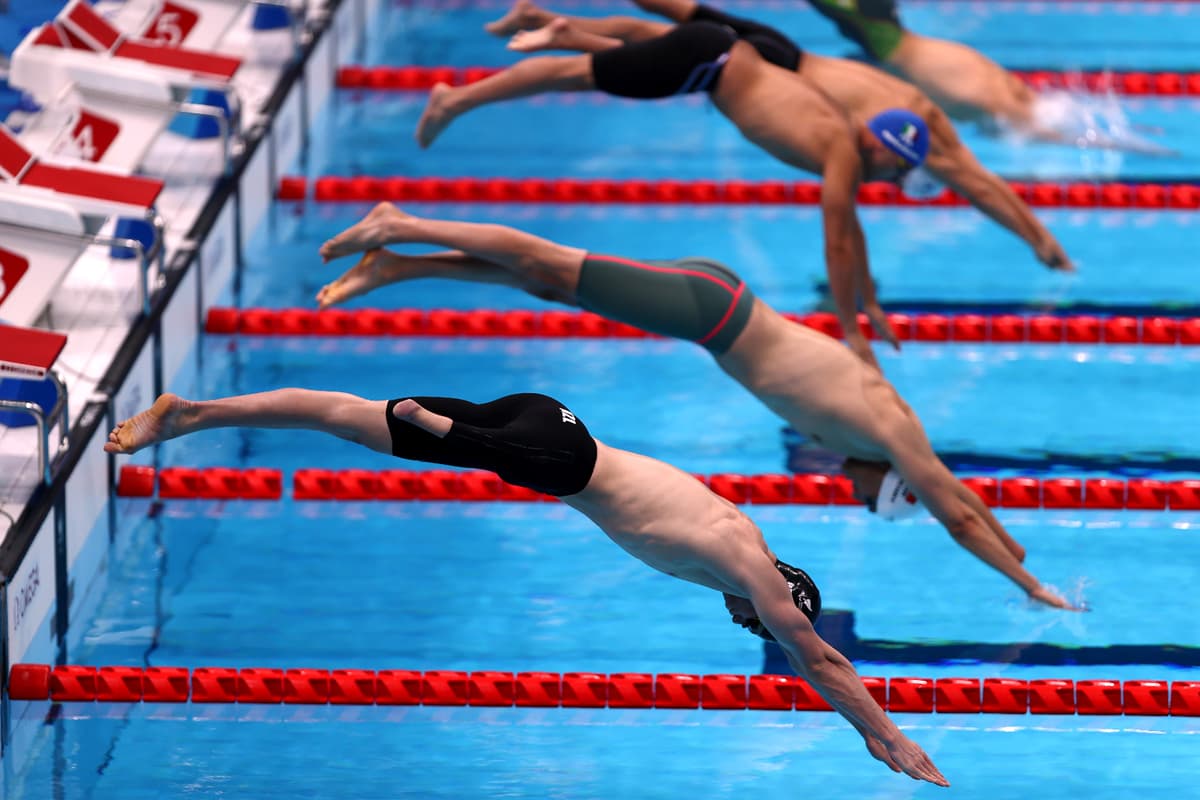In today’s sports landscape, data is revolutionizing how athletes train, compete, and improve performance. In swimming, where every fraction of a second matters, using data effectively can be the difference between winning and missing the podium. Swimming in India has always been a sport of passion and dedication, yet it faces challenges that prevent many talented swimmers from reaching their full potential. Unlike elite academies in other countries, most Indian swimmers do not have access to advanced facilities, structured training plans, or performance-tracking tools. Only a few elite swimmers benefit from wearable technology, professional support staff, and scientific training methods, while the rest struggle with limited resources and a lack of data-driven guidance.
Even those who invest in high-tech wearables often do not know how to interpret or use the data effectively. This lack of access and knowledge is a significant reason why India has struggled to produce Olympic-level swimmers. In the 2024 Olympics, only two Indian swimmers qualified despite the presence of thousands of dedicated athletes in the country. This shows that the gap is not in talent but in training methods, resources, and data-driven decision-making. To compete at the highest level, India must move towards structured, data-driven training that helps swimmers optimize performance scientifically. So, how do we bridge this gap and democratize high-performance swimming for all?
SwimProHub Academy 360°: The All-in-One SolutionEnter SwimProHub Academy 360° — India’s first comprehensive digital solution for swimmers, coaches, and academies. This Made-in-India app is designed to bring cutting-edge sports technology to the entire Indian swimming ecosystem at an affordable price.
Unlike expensive international apps that offer limited features, SwimProHub Academy 360° integrates every aspect of swimming training, management, and data analysis into one platform. It ensures that swimmers, coaches, academies, and even parents can work together to track progress, set goals, and achieve better results.
How SwimProHub Academy 360° Works for EveryoneSwimProHub Academy 360° streamlines every aspect by offering essential tools for all stakeholders related to swimming. Academies can efficiently handle swimmer registration, batch scheduling, fee plans, and attendance, while coaches benefit from structured training plans, goal setting, time trials, and performance tracking. Swimmers can log their daily activities, diet, and vitals, track attendance, view goals, and maintain a record of their achievements. Additional features include smartwatch integration, nutrition tracking, biometric attendance, and social media connectivity, making it a complete, data-driven ecosystem tailored for Indian swimming.
Why Data Matters in SwimmingModern swimming is no longer just about training harder; it is about training smarter. Data helps swimmers, coaches, and academies make informed decisions and improve performance systematically. A major reason Indian swimmers struggle to compete at the international level is that they do not know how to use performance data effectively. SwimProHub Academy 360° simplifies this by collecting and analyzing data, helping swimmers and coaches make science-backed decisions.
For Swimmers:Understanding Strengths and WeaknessesSwimmers can analyze stroke efficiency by tracking stroke rate, stroke length, and SWOLF score, allowing them to refine their technique. Data on split times, turn efficiency, and breathing patterns help optimize race strategy for better pacing. Monitoring heart rate and recovery time ensures that athletes do not overtrain, reducing the risk of injuries and improving overall performance.
For Coaches: Personalized and Scientific TrainingCoaches benefit from real-time performance monitoring, setting goals, conducting time trials, and tracking improvements systematically. They can balance intensity and recovery to reduce burnout and enhance consistency in training. By using data-driven insights, coaches can design customized training programs that target an individual swimmer’s weaknesses while maintaining their strengths.
For Academies: Efficient Swimmer ManagementAcademies can streamline operations by tracking attendance, managing training schedules, and automating administrative tasks like batch and fee management. Long-term progress reports help identify and develop promising talent, ensuring that resources are used effectively to nurture future champions.
For Parents: Active Participation in a Child’s GrowthParents can actively monitor their child’s progress by tracking training schedules, goals, and performance data. Daily logs of diet, sleep, and activities provide valuable health and wellness insights, helping swimmers maintain a well-rounded training approach. Transparent progress reports also foster trust between parents and coaches, ensuring that everyone is aligned in the athlete’s development.
Affordable & Accessible for Every SwimmerMost high-performance swimming solutions are too expensive for grassroots-level athletes. Many Indian parents spend large amounts of money on training, wearables, and diet but do not see the expected results because they lack structured guidance.
SwimProHub Academy 360° changes this by offering an affordable subscription model that costs only 30% of similar foreign apps. This makes advanced training tools accessible from grassroots to elite levels, ensuring EVERY swimmer, not just the privileged few, can benefit from data-driven training.
The Future of Indian Swimming Starts HereIf India wants to compete at the Olympic level, we need to change the way we train and manage our athletes. SwimProHub Academy 360° is not just another fitness app — it is a game-changer for Indian swimming. It brings technology, data, and structured training into one affordable and user-friendly platform, ensuring that talent is no longer limited by resources.
Get Started Today! Start using SwimProHub Academy 360° and take your training to the next level.Visit swimprohub.com and Follow us for more updates! Let’s build a stronger swimming community in India together!


